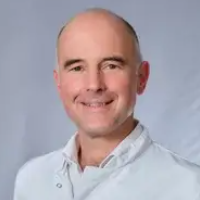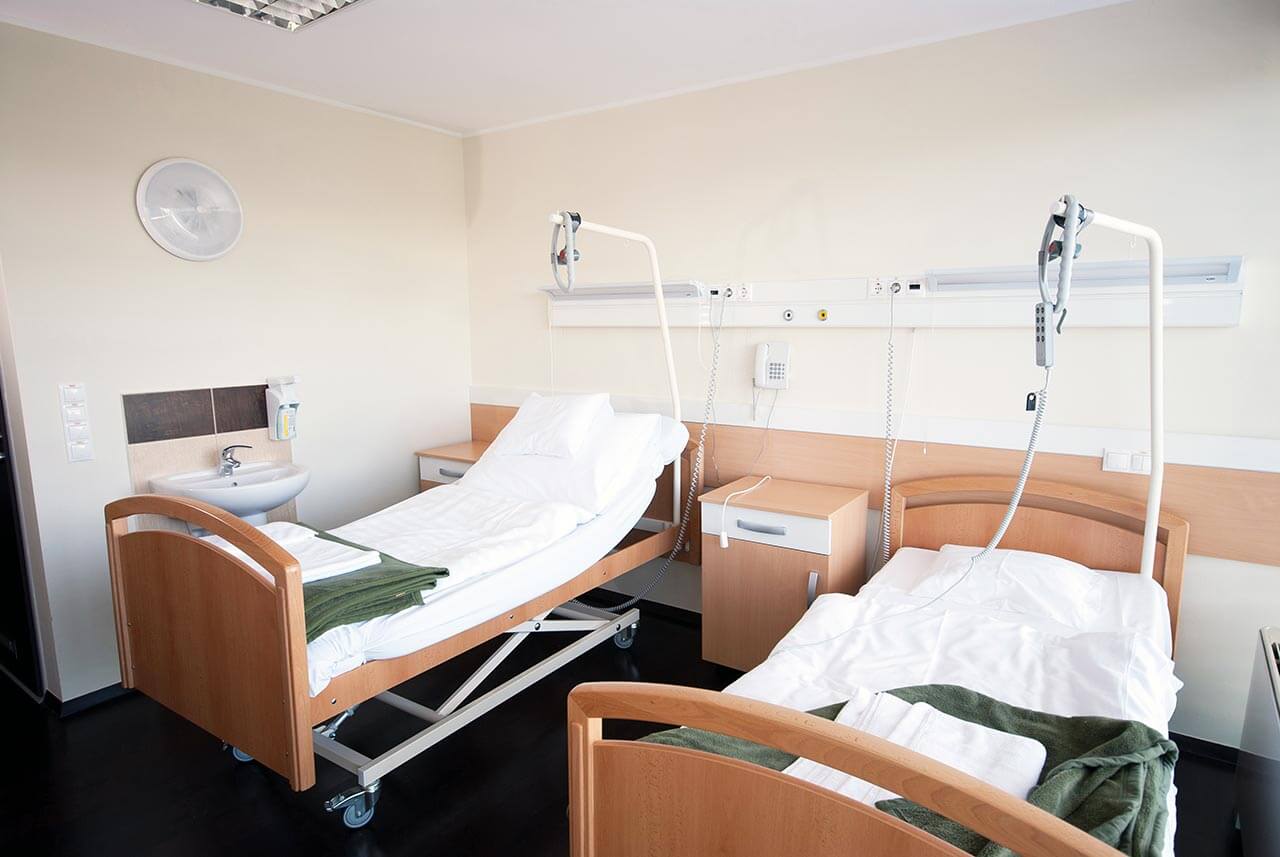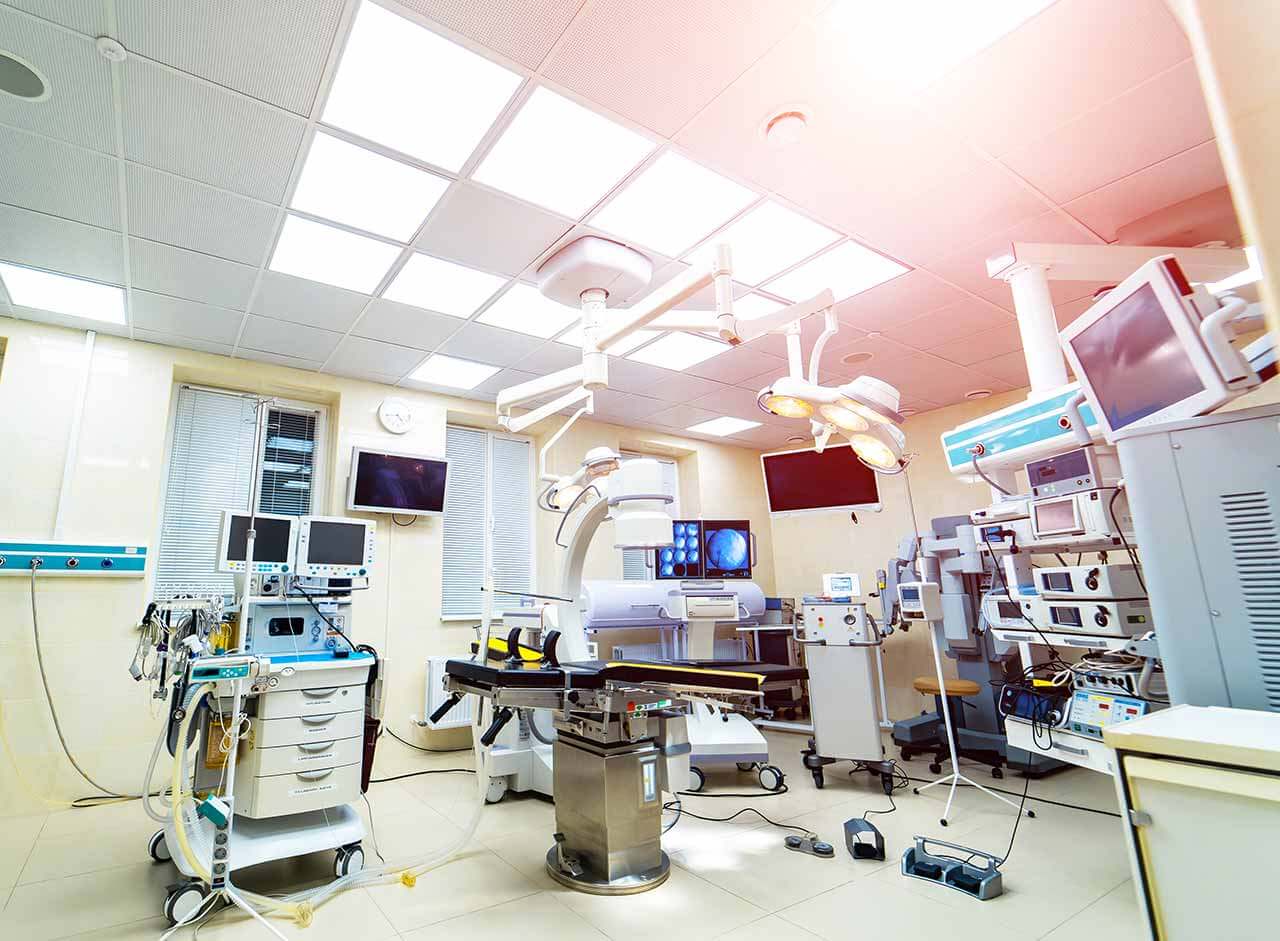
The program includes:
- Initial presentation in the clinic
- clinical history taking
- physical examination
- review of medical records
- laboratory tests:
- complete blood count
- general urine analysis
- biochemical analysis of blood
- TSH-basal
- indicators of inflammation
- indicators blood coagulation
- neurological examination
- functionality x-ray
- CT/MRI scan of the spine
- preoperative care
- dorsal spondylodesis surgery
- symptomatic treatment
- control examinations
- physiotherapeutic procedures
- the cost of essential medicines and materials
- nursing services
- full hospital accommodation
- explanation of future recommendations
Required documents
- Medical records
- X-ray examination, MRI/CT scan (if available)
Service
You may also book:
 BookingHealth Price from:
BookingHealth Price from:
About the department
According to the reputable Focus magazine, the Department of Adult and Pediatric Spinal Surgery, Scoliosis Treatment at the Schoen Neustadt Clinic Neustadt in Holstein ranks among the best medical facilities in Germany specializing in scoliosis treatment!
The department offers the full range of medical services for the diagnostics and treatment of all spinal diseases. The key focus is on therapy for scoliosis, kyphosis, herniated discs, spinal fractures, spinal tumors and deformities. The department’s team of doctors also demonstrates excellent results in the field of pain therapy for chronic back pain. The medical institution has an excellent reputation both at the national and international levels. The department is headed by Prof. Dr. med. Markus Quante.
The spinal surgeons of the department are experts in scoliosis treatment. They provide medical care to more than 300 patients with various forms of this disease annually. The department is one of the largest specialized medical centers for scoliosis treatment in Germany. To achieve the optimal result, the department’s doctors use their own developments, classical treatment methods, as well as innovative techniques, for example, implantation of "growing rods", which ensure the proper development of the spine.
The treatment of herniated discs is also among the department’s priorities. Due to the unique therapeutic programs combining medication, physiotherapy, massages, electrotherapy, etc., 90% of patients can avoid surgery. However, in some clinical cases, surgery is inevitable. The surgical treatment is performed in the progressive operating rooms equipped with all necessary devices. In most cases, the surgeons use sparing surgical techniques that have several advantages, such as minimal trauma, as well as a short hospitalization period (2-3 days). The department’s surgeons annually perform more than 2,500 operations to treat herniated discs, so the patient can be sure that he is in the safe hands of the experienced professionals.
The department’s team of doctors often deals with the treatment of patients with chronic back pain. The basis of treatment are drug therapy, physiotherapy and targeted strengthening of the muscle system. The treatment regimen is developed on an individual basis, including taking into account psychological nuances, since constant pain can cause depressive disorders. In case of severe pain, facet joint infiltration is performed. It involves the introduction of anti-inflammatory drugs in the cervical or lumbar spine under the guidance of an x-ray device (with the accuracy to millimeter). This procedure is often supplemented by physiotherapy, thermotherapy, electrotherapy, etc. In rare cases, surgery can be required to eliminate chronic back pain. As a rule, it is performed using minimally invasive, endoscopic and microsurgical techniques.
The department’s range of medical services includes:
- Conservative and surgical treatment of scoliosis
- Conservative treatment methods
- Physiotherapy for mild forms of scoliosis
- Correction of scoliosis in children with a special corset
- Surgical treatment methods
- Correction of scoliosis with the installation of metal implants (screw and rod systems)
- Correction of scoliosis using the installation of "growing rods" in children
- Conservative treatment methods
- Conservative and surgical treatment of kyphosis
- Conservative treatment methods
- Physiotherapy
- Corset correction
- Surgical treatment methods
- Spinal stabilization with implants (surgical treatment for kyphosis is rarely performed)
- Conservative treatment methods
- Conservative and surgical treatment of herniated discs
- Conservative treatment methods
- Pain therapy (painkillers and anti-inflammatory drugs)
- Physiotherapy
- Targeted strengthening of the muscle system using a special set of exercises
- Thermotherapy
- Massages
- Gymnastics
- Electrotherapy
- Surgical treatment methods
- Intervertebral disc replacement surgery (minimally invasive surgery)
- Conservative treatment methods
- Conservative and surgical treatment of spinal fractures
- Conservative treatment methods
- Fractures of the cervical spine – immobilization with a cervical collar with concomitant physiotherapy
- Fractures of the thoracic and lumbar spine – immobilization
- Surgical treatment methods
- Surgical treatment of vertebral fractures, including endoscopic interventions
- Fixation of the affected parts with screws and plates
- Conservative treatment methods
- Conservative and surgical treatment of ankylosing spondylitis
- Conservative treatment methods
- Physiotherapy
- Medication (for example, glucocorticoids, sulfasalazine, etc.)
- Thermotherapy
- Electrotherapy
- Infrared therapy
- Massages
- Mud therapy
- Surgical treatment methods
- Surgical immobilization to stabilize the corresponding spine (in case of spinal instability or fractures)
- Straightening and fixation of vertebral bodies in case of pronounced curvature of the spine
- Wedge resection of the vertebral bodies in kyphosis
- Conservative treatment methods
- Conservative and surgical treatment of osteochondrosis
- Conservative treatment methods
- Physiotherapy
- Posture correction
- Surgical treatment methods
- Minimally invasive surgery
- Conservative treatment methods
- Conservative and surgical treatment of osteoporosis
- Conservative treatment methods
- Drug therapy
- Surgical treatment methods
- Bone cement injection
- Minimally invasive stabilization using screw and rod systems
- Treatment of femoral fractures (often occur in the elderly)
- Conservative treatment methods
- Conservative and surgical treatment of chronic back pain
- Conservative treatment methods
- Multimodal pain therapy
- Surgical treatment methods
- Minimally invasive surgery
- Microsurgery
- Endoscopic surgery
- Conservative treatment methods
- Conservative and surgical treatment of spinal stenosis
- Conservative treatment methods
- Drug treatment
- Physiotherapy
- Periradicular therapy for severe pain
- Surgical treatment methods
- Microsurgery
- Conservative treatment methods
- Conservative and surgical treatment of spondylolisthesis
- Conservative treatment methods
- Conservative treatments
- Drug treatment
- Physiotherapy
- Surgical treatment methods
- Stabilization interventions
- Conservative treatment methods
- Conservative and surgical treatment of other spinal diseases
Curriculum vitae
Higher Education and Postgraduate Training
- 1992 - 1998 Medical studies, University of Duesseldorf.
- 1997 - 1998 One-year internship in Orthopedics, University of Duesseldorf.
- 04.10.1999 Thesis defense, University of Duesseldorf.
- 06.06.2007 Habilitation, Philipps University of Marburg.
- 11.07.2013 Extraordinary Professorship, Faculty of Medicine, Philipps University of Marburg.
Medical Practice
- 1998 Internship, Department of Orthopedics, Asklepios Hospital Barmbek Hamburg.
- Since 06.2000 Admission to medical practice; Assistant Physician, Department of Orthopedics, Asklepios Hospital Barmbek Hamburg.
- 09.2002 - 09.2003 Clinical training in the multimodal treatment of chronic back pain, Center for Spinal Diseases in Hamburg.
- 04.2003 - 08.2004 Assistant Physician, Department of Orthopedics and Trauma Surgery, Asklepios Hospital Eilbek Hamburg.
- 07.2005 - 01.2008 Senior Physician, Department of Orthopedics and Rheumatology, University Hospital Marburg.
- 01.2007 - 01.2008 Head of the Interdisciplinary Center for Back Pain, University Hospital Marburg.
- 05.2007 - 01.2008 Managing Senior Physician, Department of Orthopedics and Rheumatology, University Hospital Marburg.
- 02.2008 - 12.2010 Senior Physician, Department of Adult and Pediatric Spinal Surgery, Scoliosis Treatment, Schoen Neustadt Clinic Neustadt in Holstein.
- Since 01.2011 Head Physician, Department of Adult and Pediatric Spinal Surgery, Scoliosis Treatment, Schoen Neustadt Clinic Neustadt in Holstein.
Memberships in Professional Societies
- German Spine Society (DGW).
- German Society for Orthopedics and Orthopedic Surgery (DGOOC).
- Professional Association of Orthopedists and Traumatologists of Germany (BVOU).
- AO SPINE.
Photo of the doctor: (c) Schön Klinik Neustadt
About hospital
The Schoen Neustadt Clinic Neustadt in Holstein is a private medical facility that provides first-class medical services in the treatment of musculoskeletal diseases. The clinic has 10 specialized departments with more than 900 highly qualified employees. Particularly outstanding results are demonstrated by specialists from the Department of Spinal Surgery and Scoliosis Treatment. They deal with the treatment of patients with pathologies of varying severity, ranging from herniated discs, inflammatory lesions and injuries to complex spinal deformities.
The medical institution admits patients not only from Germany, but from other countries of the world. In total, it treats more than 19,000 inpatients and about 52,000 outpatients annually.
In autumn 1999, the clinic passed certification according to DIN EN ISO 9001, which is regularly confirmed.
The basis of successful clinical practice is the availability of advanced equipment, which, combined with the high professionalism of the clinic’s doctors, works wonders. The diagnostic range of the health facility includes CT scans, MRI, ultrasound, classic x-ray and other techniques. The clinic also strictly adheres to radiation protection standards. The operating rooms of the clinic are equipped with all the necessary modern equipment for classical, endoscopic, as well as minimally invasive interventions. Wherever possible, minimally invasive and endoscopic surgery is preferred.
A great advantage of the clinic is that it not only treats spinal pathologies, but also provides subsequent rehabilitation. The direction of orthopedic rehabilitation is awarded by the certificate of quality "Medical rehabilitation of proven quality" of Schleswig-Holstein.
It is worth noting that the clinic is located almost on the shore of the Baltic Sea, which in the warm season allows patients to combine treatment with relaxation. The beautiful landscapes around the clinic contribute to peace of mind and speedy improvement of patients' well-being.
Photo: (c) depositphotos
Accommodation in hospital
Patients rooms
The patients of the Schoen Neustadt Clinic Neustadt in Holstein live in cozy and comfortable patient rooms. Each patient room has an ensuite bathroom with shower and toilet. The standard patient room includes an automatically adjustable bed with an orthopedic mattress, a bedside cabinet with a pull-out table, a wardrobe for storing personal belongings, a table and chairs for receiving visitors, a telephone, a TV. Also, the clinic offers access to Wi-Fi.
You can choose a single or double patient room. Your accompanying person may stay with you in a single patient room. A patient double room will be shared with another patient of the same gender.
The enhanced-comfort rooms have a safe, a fridge and upholstered furniture.
Meals and Menus
The patient and the accompanying person are offered a daily choice of three menus. If you do not eat all the foods for any reason, you will be offered an individual menu. Please inform the medical staff about your dietary preferences prior to the treatment.
Further details
Standard rooms include:
Religion
The religious services can be provided upon request.
Accompanying person
Your accompanying person may stay with you in your patient room or at a hotel of your choice during the inpatient program.
Hotel
You may stay at the hotel of your choice during the outpatient program. Managers will help you choose the most suitable options.




